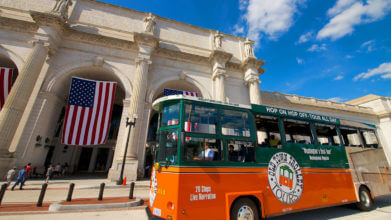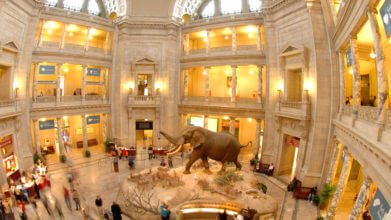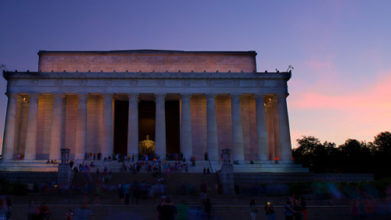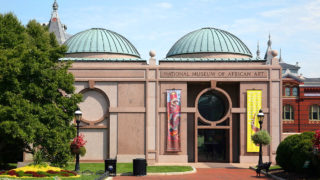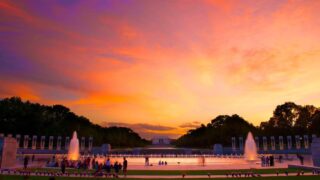MBM – Ford’s Theater
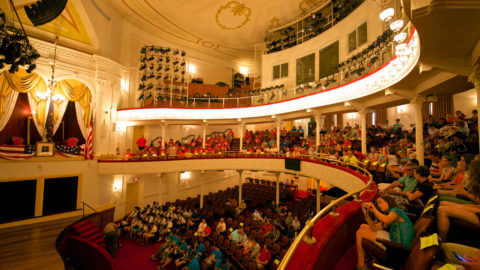
It was a nice Friday evening for the theater on April 14, 1865. Abraham Lincoln, the 16th President of the United States, and his wife Mary Todd Lincoln were looking for a much-needed respite from the blood-letting and acrimony that characterized this nation’s first and only Civil War. It was decided that they were going to the Ford’s Theater to attend a performance of ‘Our American Cousin,’ a three-act farce about a boorish American who returns to England to lay claim to the family estate. They made it a double-date night and invited Major Henry Rathbone and his wife-to-be Clara Harris, the daughter of a prominent Senator, to join them. Upon arrival, the two couples were escorted to a special state box high above the stage where they would sit and watch the play. The audience was restless and humming like a million bees at the sight of the President of the United States in attendance and because they were eager to see a play that had taken America by storm. The moment finally arrives.
House lights go out.
The footlights glow and the curtain rises…
Then, everything changes.
A NIGHT AT THE THEATER FOR THE AGES
Located on 511 10th Street NW in Washington, DC, the Ford’s Theater began its life as a church. John Ford, a successful theater owner and businessman, converted the building into a theater at the outset of the Civil War. Midway through the war, a fire broke out in the theater and Ford had to re-invest a considerable sum of money to repair the damage and restore the building. On that fateful Friday night, during the second scene of the third act, W. J. Ferguson, a bit player in the production, was finishing up a scene when the report of a pistol rang throughout the theater. Thinking that it was most likely the prop master discharging old firearms in order to reload them, the play continued uninterrupted. Suddenly, from over 12 feet above the stage, a man plummeted to the stage. This knife-wielding man was prominent actor John Wilkes Booth, a fanatical pro-slavery advocate, whose opposition of Lincoln’s abolitionist stance so repulsed him that he took a Derringer pistol and shot the President in the back of the head, causing a mortal wound that ultimately killed him. Despite a fractured ankle caused by the fall, Booth made his way to the backstage door and fled on a waiting horse. He was also able to do a significant bit of damage to Major Rathbone, stabbing him several times with a dagger in order to escape from his clutches. Booth made his way to a secluded farm in rural Virginia and managed to evade capture for 12 days; but one of his co-conspirators gave him up and he was hunted down and killed by a Union Army officer.
Abraham Lincoln was taken across the street to the Peterson House, a boarding house that was once rented by future Vice President John C. Breckenridge, so his head wound could be tended to. Despite the Army surgeon’s best efforts, he slipped into a coma and passed away nine hours later in a bed too small to hold him.
YESTERDAY & TODAY
Ford’s Theater was closed by the government and treated as a crime scene with many Union soldiers posted all over the property. Eventually, the government returned the theater to Mr. Ford but the damage had already been done. His plans to re-open the theater were met with widespread backlash as many in the country thought it would be inappropriate to treat the building as a venue for entertainment after something so horrific had occurred there. Left with no choice, Ford sold the building to the government who turned it into office and storage space for the War Department. In the 1890s an entire floor collapsed and killed dozens of people, injuring over a hundred more. People were beginning to believe the place was cursed. Afterward, the building was largely abandoned and it slipped into disrepair until a plan was decided upon to restore the theater to its former glory. In 1968, that vision was realized and became a historic site paired along with the neighboring Peterson House. In the basement, artifacts related to the assassination were displayed. The Philadelphia Derringer used to shoot the president is there as is the boot that Booth left behind as he hurriedly fled the scene. The knife used to fend of Major Rathbone is also on display.
In 2009, on the bicentennial of Lincoln’s birthday, the theater was converted into a modern, multi-media museum with cutting-edge technology. This new tech offers visitors a much broader context of the Lincoln story beyond his assassination. Factors like the bitter divide over slavery and Lincoln’s inability to find suitable generals to lead his army are explored in depth. The power of Lincoln’s words is also commemorated with the Gettysburg Address exhibit. There, living presidents can be seen reciting portions of the address on a video screen.
Three years after the Lincoln Bicentennial, the Ford’s Theater Society expanded even further with an education and leadership center whose mission is to tell the global story of the aftermath of Lincoln’s death as well as to shine a light on the legacy he left behind.
SEE THE BEST OF DC FIRST
The next time your travels take you to Washington DC and you have the Ford’s Theater on your to-do list, consider taking a ride with Old Town Trolley Tours. For over 30 years, the history and legends of the Nation’s Capital have been explored by some of the most knowledgeable guides on a fully-narrated city tour that is both educational and entertaining. Very near the Washington Welcome Center, where many purchase their tickets and commence their adventure, you’ll find the Ford’s Theater along with the Peterson House that you’ll be able to check out at your own pace on, what Forbes calls, one of the Top Ten Hop-On Hop-Off tours in the world.

